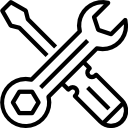Thermo-stoves are a valid alternative to heat your entire home
If you’re considering a pellet thermo-stove to heat your home, you’ve probably noticed that prices vary considerably depending on several factors. Here we explain what aspects you should take into account to evaluate the offers on the market and make a high-quality purchase.
A thermo-stove is a special type of high-powered pellet stove, designed to be connected to your existing heating system (radiators or underfloor heating). It’s an interesting solution, as it allows you to heat an entire house at low costs using a natural and renewable fuel—pellets—and thus access various tax incentives. But what characteristics affect the price of a thermo-stove?
1. POWER OUTPUT
Since it needs to heat the water in the entire system, a thermo-stove has higher power than air-only stoves:
- Air stoves range from 6 to 8 kW, up to 14 kW if ducted.
- Thermo-stoves range from 8 to 30 kW (beyond this power, they are considered boilers, not stoves).
The price naturally increases with power. Use our configurator to compare different models.
To determine what power you need, you’ll need to assess your “heat demand,” which depends on the total volume to be heated and your home's insulation level. You can make a rough estimate using the method described in our article, but always consult a professional to correctly size your system.
2. FUNCTIONALITY
Thermo-stoves come in two main categories:
- Manual control thermo-stoves, shipped with factory settings and adjusted by the installer based on your setup and pellet type.
- Automatically regulated thermo-stoves, which adapt combustion on their own according to installation and pellet type.
The latter are more expensive but offer greater efficiency and ease of use.
3. OPTIONAL FEATURES
- Domestic Hot Water (DHW) Exchanger
If you plan to use your thermo-stove for both heating and hot water, you’ll need one with a DHW exchanger. This feature is included or added to high-power models (22–24 kW and up) and allows heat transfer from technical water to sanitary water. The kit usually includes a plate heat exchanger, three-way valve, and flow switch. - Self-cleaning brazier
This automatic scraping system activates at set intervals or when ash clogging is detected. It reduces maintenance and ensures efficient stove operation with optimal combustion. - Chronothermostats and Temperature Sensors
These systems communicate with the stove and allow precise control of combustion based on measured and desired temperatures. They can be placed in different rooms for improved comfort and energy efficiency. - Remote Control Systems (Wi-Fi)
While most thermo-stoves have control panels, advanced models offer remote control—even via smartphone when you're away from home. - Aesthetic Design
Design quality and materials used for the stove’s exterior may be considered optional, but they’re important if the stove is to be a feature in your living room, not hidden in a utility area.
We’ve given you an overview of the factors that affect pricing. Ready for a personalized quote? Click here to contact the nearest dealer.


